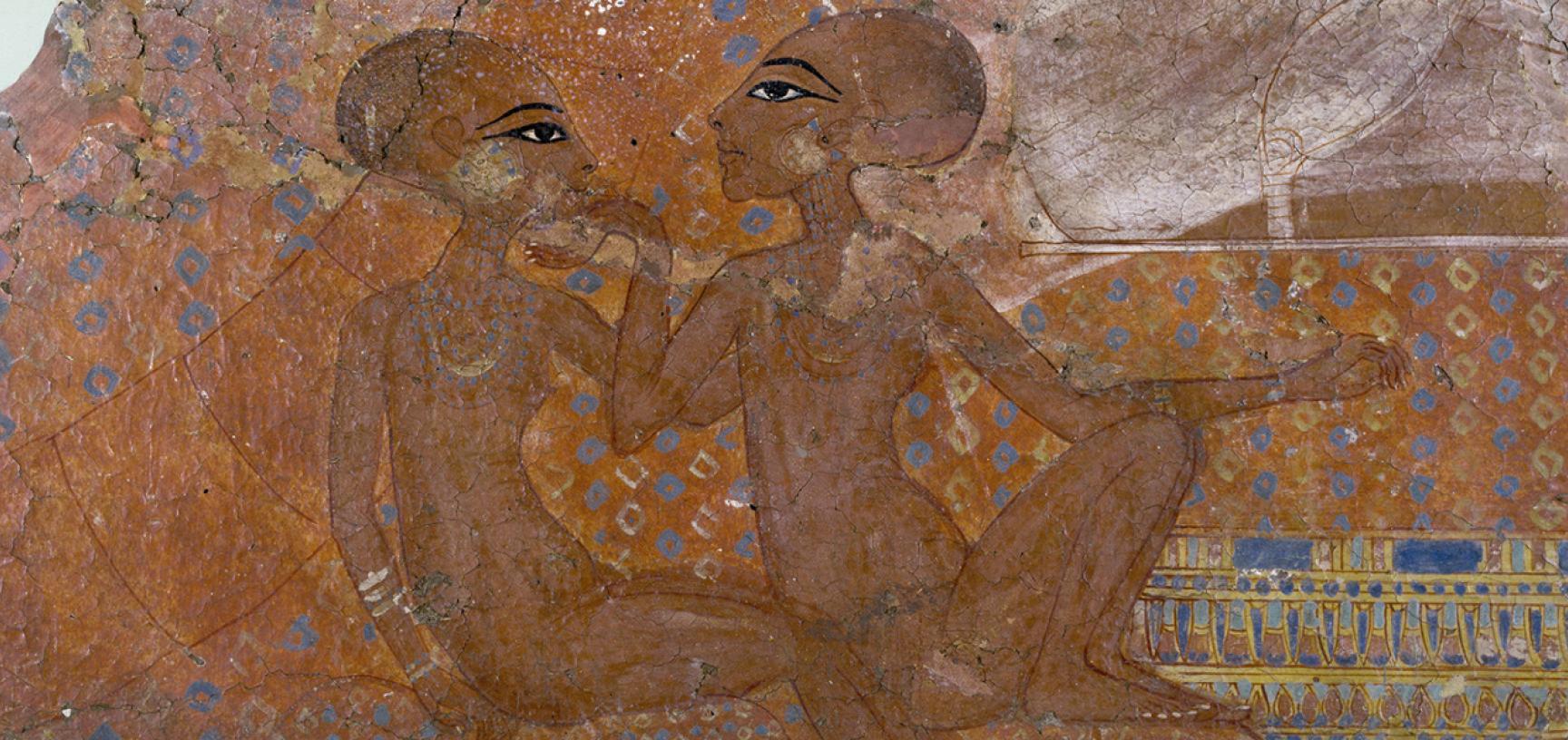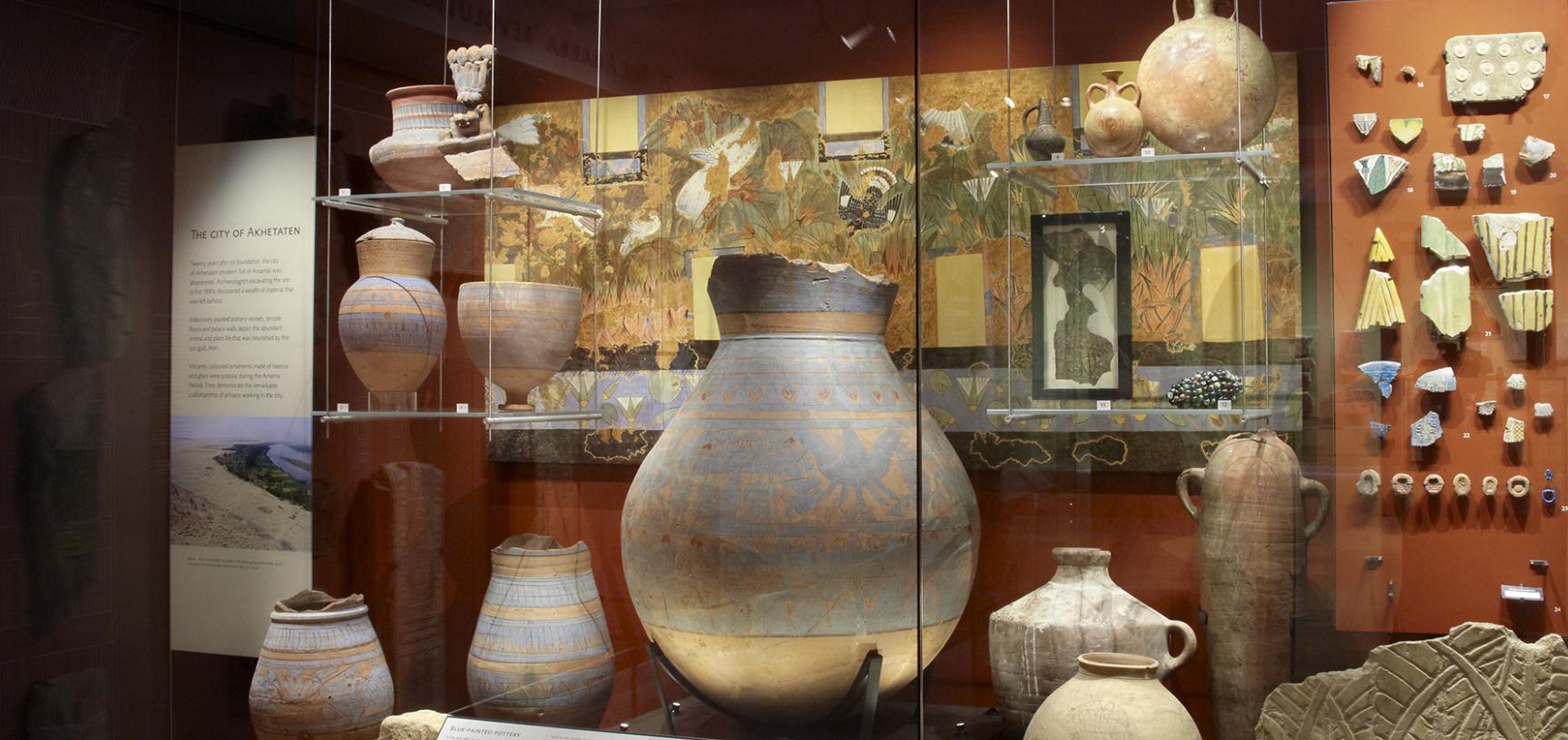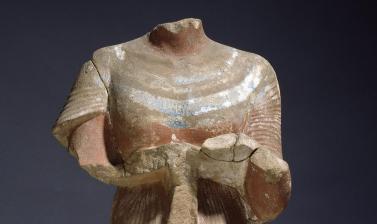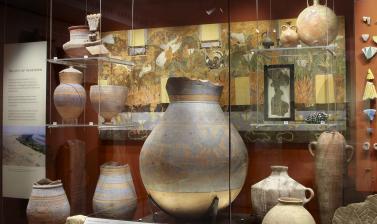THE AMARNA 'REVOLUTION'
When Amenhotep IV became king of Egypt in the 18th dynasty he broke with religious and political tradition and worshipped the sun as a creative force called the Aten.
He changed his name to Akhenaten and built a new capital city called Akhetaten (now known as Tell el- Amarna) where he lived with his queen Nefertiti and their six daughters in the new royal palace, parts of which are replicated here including a fragment of the painted floor.
The informal theme of palace life is beautifully conveyed in the ‘Princesses fresco’ displayed in the wall case on the right. This fragment of wall painting is the lower part of a scene depicting Akhenaten and Nefertiti relaxing with their daughters, two of whom are sitting casually on floor cushions in the foreground. The informal style and subject of this painting was in direct contrast to conventional Egyptian art.
A headless statue of Akhenaten holding an offering table is displayed in the centre of the gallery. It may have suffered this damage after the end of his reign when there was a counter-revolution and a return to orthodoxy. Images of the royal family and their monuments were destroyed and the court returned to Thebes.











